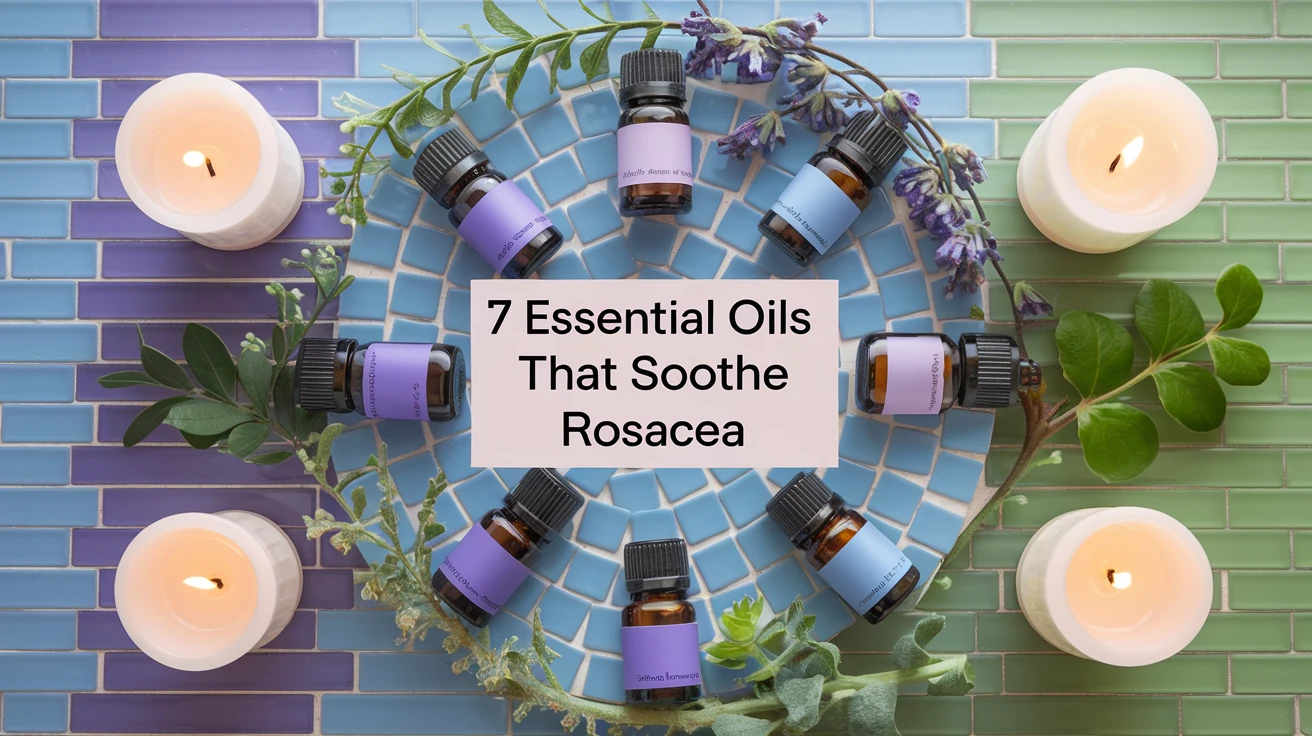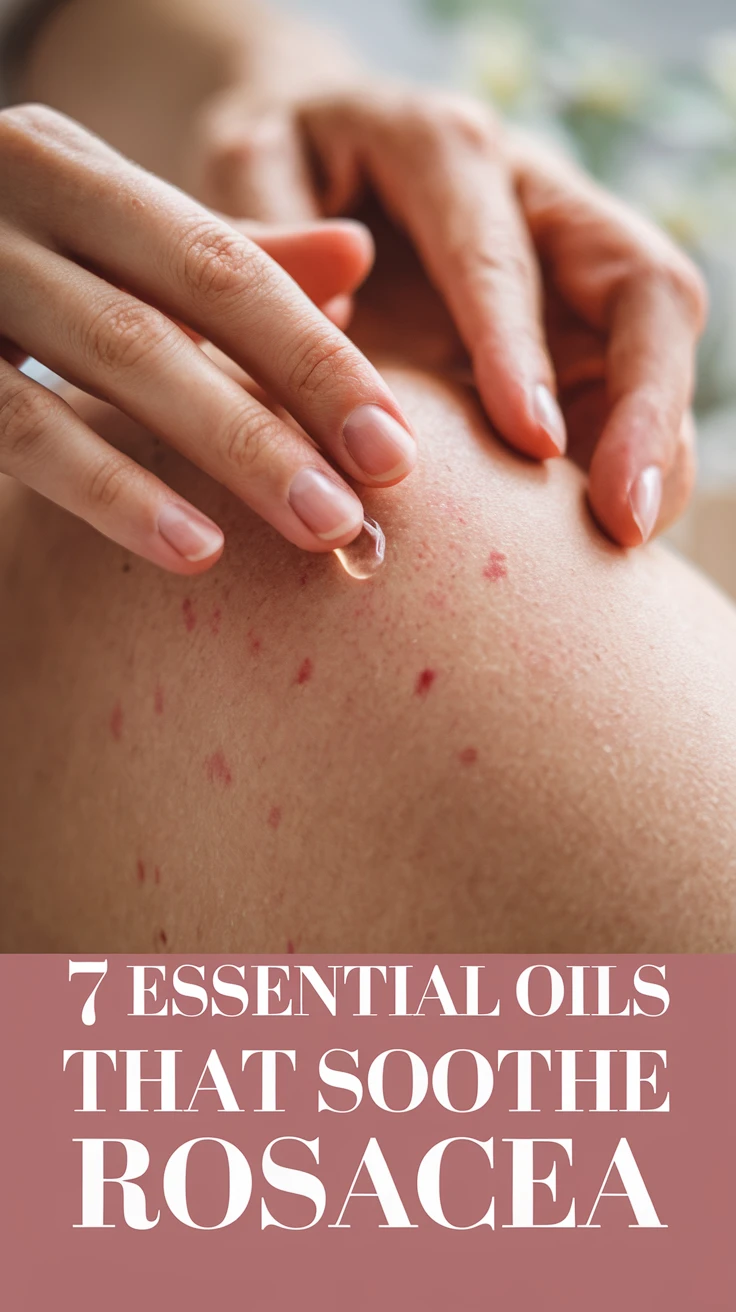
Living with rosacea can feel like an endless battle against unpredictable flare-ups and persistent redness. As someone who has witnessed the transformative effects of natural remedies, I’ve discovered that essential oils offer a gentle yet effective approach to managing this challenging skin condition. While there’s no cure for rosacea, certain essential oils have shown remarkable potential in soothing inflammation and reducing the frequency of flare-ups. In this comprehensive guide, we’ll explore seven carefully selected essential oils that have proven particularly beneficial for those struggling with rosacea, backed by both scientific research and real-world experience.
Understanding Rosacea and Essential Oils
Before diving into specific oils, it’s crucial to understand why essential oils can be beneficial for rosacea management. Rosacea is a chronic inflammatory skin condition characterized by redness, visible blood vessels, and sometimes small, red bumps on the face. Essential oils offer natural anti-inflammatory, antimicrobial, and healing properties that can address multiple aspects of rosacea symptoms.
Key benefits of using essential oils for rosacea include:
– Natural anti-inflammatory properties
– Gentle skin barrier support
– Antimicrobial effects
– Stress reduction (a common trigger for flare-ups)
– Antioxidant protection
| Property | Benefit for Rosacea |
|---|---|
| Anti-inflammatory | Reduces redness and swelling |
| Antimicrobial | Helps prevent infections |
| Antioxidant | Protects skin from environmental damage |
| Healing | Supports skin barrier repair |
The 7 Most Effective Essential Oils for Rosacea
1. Lavender Essential Oil
Lavender is often my first recommendation for rosacea sufferers due to its gentle yet effective properties. This versatile oil combines anti-inflammatory benefits with skin-soothing capabilities, making it perfect for sensitive skin.
Benefits:
– Reduces inflammation and redness
– Promotes skin healing
– Helps manage stress-related flare-ups
– Safe for most skin types
2. Chamomile Essential Oil
Both German and Roman chamomile varieties offer exceptional benefits for rosacea-prone skin. The azulene content in chamomile provides powerful anti-inflammatory effects.
| Chamomile Type | Specific Benefits |
|---|---|
| German Chamomile | Stronger anti-inflammatory properties |
| Roman Chamomile | Gentler, suitable for very sensitive skin |
3. Tea Tree Essential Oil
While tea tree oil needs careful dilution, its antimicrobial properties can be particularly helpful for rosacea subtypes involving papules and pustules.
Key Benefits:
– Fights bacteria and inflammation
– Reduces redness
– Helps clear papules
– Balances oil production
4. Rose Essential Oil
Though premium-priced, rose essential oil offers unique benefits for rosacea:
– Strengthens capillary walls
– Reduces visible redness
– Provides emotional balance
– Offers intense hydration support
5. Helichrysum Essential Oil
This powerful anti-inflammatory oil supports skin healing and reduces redness. Its regenerative properties make it especially valuable for long-term rosacea management.
6. Geranium Essential Oil
Geranium helps balance skin conditions and promotes healthy circulation, making it effective for:
– Reducing inflammation
– Balancing oil production
– Strengthening skin
– Improving overall complexion
7. Frankincense Essential Oil
This ancient oil offers modern benefits for rosacea management:
– Supports skin cell regeneration
– Reduces inflammation
– Promotes even skin tone
– Strengthens skin resilience
Safety First: Essential Oil Application Guidelines
Proper application is crucial for safety and effectiveness. Always follow these guidelines:
| Carrier Oil | Dilution Ratio | Best For |
|---|---|---|
| Jojoba Oil | 2% | All skin types |
| Argan Oil | 1-2% | Dry, sensitive skin |
| Rosehip Oil | 1% | Very sensitive skin |
Essential Safety Tips:
– Always perform a patch test
– Never apply undiluted oils
– Start with lower concentrations
– Discontinue if irritation occurs
– Store oils properly
Maximizing Results: Tips and Best Practices
To get the most benefit from essential oils for rosacea:
1. Create a Consistent Routine
– Morning application: Use lighter combinations
– Evening application: Apply more nourishing blends
– Weekly treatments: Deep soothing masks
2. Combine with Lifestyle Changes
– Identify and avoid triggers
– Protect skin from sun exposure
– Maintain gentle skincare routine
– Stay hydrated
3. Monitor Your Progress
– Keep a skin diary
– Document which combinations work best
– Track environmental factors
– Note any triggers
Conclusion
Essential oils offer a natural and effective approach to managing rosacea symptoms when used correctly and consistently. While each person’s experience with rosacea is unique, these seven essential oils provide a solid foundation for creating a personalized treatment approach. Remember to always start slowly, patch test new oils, and work with your healthcare provider to develop a comprehensive management plan.
Key Takeaways
- Essential oils must always be diluted properly before application
- Consistency in application is key to seeing results
- Different oils may work better for different rosacea subtypes
- Combining oils with lifestyle changes produces the best results
- Patient and gentle approach yields the most sustainable improvements
Frequently Asked Questions
How long does it take to see results with essential oils for rosacea?
Most people notice initial improvements within 2-4 weeks of consistent use, though significant results typically take 8-12 weeks.
Can I use multiple essential oils at once?
Yes, but start with one oil at a time to identify what works best for your skin. After testing individually, you can create custom blends.
What’s the best carrier oil for rosacea-prone skin?
Jojoba oil is often considered ideal as it closely mimics skin’s natural oils, but argan and rosehip oils are also excellent choices.
How often should I apply essential oils?
Start with once daily application, preferably in the evening. If well-tolerated, you can increase to twice daily.
Can essential oils cure rosacea?
While essential oils can’t cure rosacea, they can help manage symptoms and reduce flare-up frequency when used as part of a comprehensive treatment plan.
Are there any essential oils to avoid with rosacea?
Yes, avoid harsh oils like cinnamon, peppermint, and citrus oils, which can be too stimulating for rosacea-prone skin.
Should I consult a doctor before using essential oils?
Yes, especially if you’re using other treatments or have severe rosacea. Essential oils can interact with medications or exacerbate symptoms if not used properly.
Can I use essential oils during a flare-up?
It’s best to wait until acute flare-ups calm down before introducing essential oils, then start with very gentle options like lavender or chamomile.
How should I store my essential oils?
Store in dark glass bottles, away from direct sunlight and heat, preferably in a cool, dark place. Properly stored oils can last 1-2 years.
Can I make my own essential oil blend for rosacea?
Yes, but ensure proper dilution ratios and start with simple combinations of 2-3 oils maximum until you know how your skin responds.

